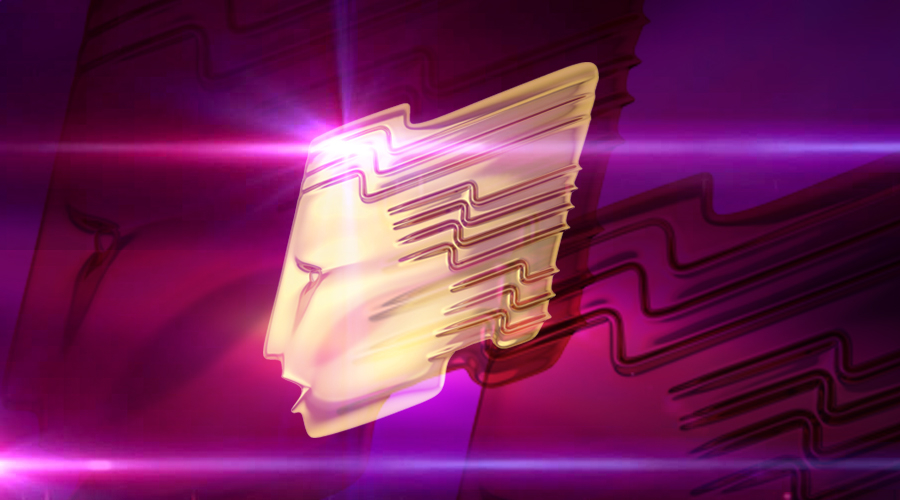Innovation Awards 2003

The 2003 Technical Innovation Awards were presented by Simon Shaps, Chairman, RTS on Monday 3 November 2003 at Bafta, 195 Piccadilly, London W1.
For Further Information Contact:
Lindsey Cran, Events Organiser
Tel: 020 7691 2475 Fax: 020 7430 0924
E-mail: lindsey@rts.org.uk
Winners
INNOVATIVE APPLICATIONS
QScript
Autocue
“TV news has been one of the biggest beneficiaries, and early adopters, of new technology…and yet even it is still beset by what is well described as ‘suffering from too many digital islands in an analogue sea’ – or, put another way, it is not yet a fully ‘joined-up’ system. What should be a smooth process from capture, through editing, scripting and production to transmission is too often prevented by incompatibilities. One of the hubs of any TV news operation is the control room. Until recently it has been an outstanding example of this problem. QScript has been designed specifically to help overcome this problem, by providing the following facilities as a control-room front-end on any newsroom computer system:
· a real-time rundown link - this mirrors the central rundown held in the main newsroom computer system
· a multiple script display with an automatic advance, which, via its On-Air and Preview displays, allows firstly the current and a selectable next script to be shown simultaneously, and secondly the manually-controlled move of the Preview script to the On-Air display as required, with a selectable replacement of the Preview source.
· a multiple script display - which is, amongst other things, the electronic equivalent of the much-loved ability to shuffle the pages of a traditional script in order to change the running order.
· an annotation system, which is based on utilising the ‘digital ink’ capability within the Microsoft Windows XP Tablet edition. This allows both ‘private’ and ‘public’” hand-written annotations on scripts to be converted, via the text-recognition capabilities in Tablet, into additions in the appropriate scripts. It can also be applied to prompter scripts. This continues much-loved – and needed - manual practices of, for example, highlighting particular words or text.
Whilst recognising its news parentage, the judges were also informed that, when sitting on appropriate scripting and running order computer programmes (including the ubiquitous Microsoft Word), “QScript” will also be applicable in many of the more general areas of programme production.”
Nominees
Pyramid – BBC
Fightbox – Fightbox Ltd, BBC Research & Development, BBC Worldwide and Avolites for BBC Resources
ADVANCED ENGINEERING TECHNIQUES
VISTA – Virtual Human Interface for a Set-Top box Agent
British Sky Broadcasting Limited, City University London, University of East Anglia, The Victoria University of Manchester, Televirtual Limited and Sensory Inc. for the Independent Television Commission
“Electronic Programme Guides are an essential feature of digital television services. However, current EPGs pose special problems for visually-impaired viewers - because they may not be able to read the on-screen text sufficiently clearly. The VISTA project developed a virtual human interface, through which there is interaction with the relevant data that is carried by the digital services. It allows users to make comprehensive enquiries about the EPG data by voice, and for the system to respond via synthetic speech.. The system uses a novel and original combination of state-of-the-art technologies in the areas of:
· user-independent speech recognition
· virtual humans with natural gestures and lip movements
· speech synthesis, with the speech rate and pitch both being adjustable to suit user requirements
· EPG software with a database enquiry engine
The system integration required that there was accurate synchronisation between the lip movements of the virtual human and the synthetic speech output, because some visually-impaired viewers may also have some degree of hearing loss, and therefore rely on lip reading. The project team had to face, and subsequently overcame, three key engineering challenges:
· optimisation of the speech recognition system - so as to maximise detection accuracy, and to provide sufficient flexibility in the system to encompass the wide-ranging vocabulary that may occur in EPG information.
· development of a reliable auditory interaction specification, with built-in fail-safes, to allow effective and efficient searches of the EPG data using verbal requests.
· effective and efficient systems integration to ensure reliable system performance.”
Nominees
‘Postcode’ Architecture Development Team – Nucoda
JUDGES’ AWARD
The Pace Development Team 1994-2002
“The Judges had a clear view that this year one organisation should be rewarded for its innovative actions in contributing to the advancement of digital broadcasting. Particularly for their early recognition of the way that digital broadcasting was going, for their swift steps to get into the consumer part of that market, and for their innovative approaches to the technological designs of their equipment, during the period 1994 to 2002 this organisation stamped its mark on our industry. We sometimes forget that broadcasting is a point-to-multipoint system, and that ensuring the best and most cost-effective reception by the ‘multi’ has huge implications. This year’s winner is a small UK company that has found its place literally in thousands and thousands of homes, because the RTS Technology Judges’ Award for 2003 goes to Pace.”
